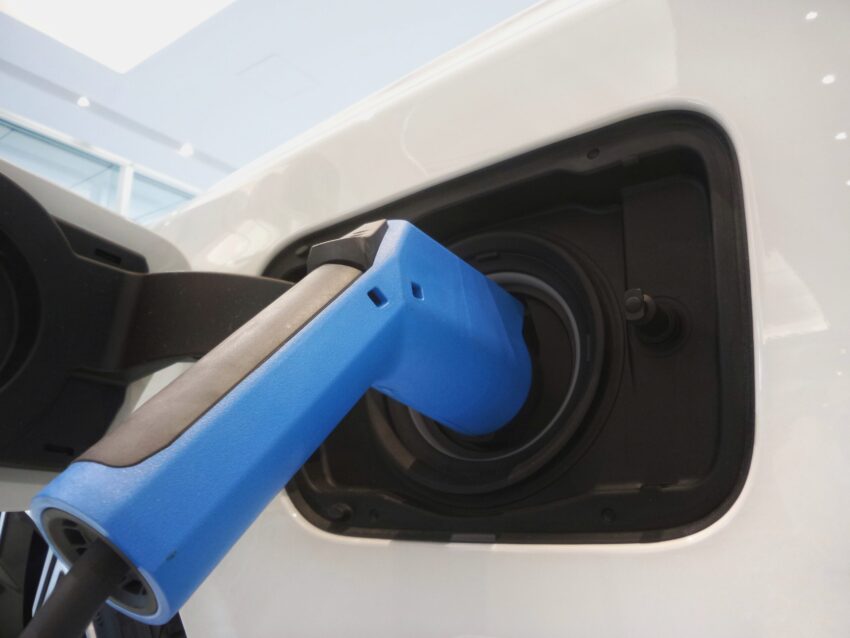AG INSIGHT | 07/09/2017
Electric fleets: No longer if, but when and how?

Ian Featherstone, Fleet Advice Manager, at the Energy Saving Trust reviews his work with companies and public organisations in helping them understand why and how to move to a zero-emission fleet.
Environmentalists think a lot about how we can persuade individual car owners to switch from internal combustion engines to electric vehicles. But we tend to talk less about switching business fleets towards electric options. Ian Featherstone, Fleet Advice Manager at the Energy Saving Trust, works with companies and public organisations helping them understand why and how to move to a zero-emission fleet.
It often surprises people to know that around half of new cars bought each year are operated by business fleets. I have been working in the fleet and leasing industry for quite a few years and can honestly say that we are entering the most exciting period of change that I have ever experienced. But it’s also a change that feels familiar.
When I started in the industry in the mid-1980s, almost every company car and most light vans were fuelled by petrol. Almost overnight, it seemed, mainstream manufacturers started to introduce diesel models, limited in number at first, and not universally accepted in the fleet community. There were concerns about diesel cars: lack of refuelling facilities, higher purchase cost, uncertain residual values and maintenance budgets. Fleet managers needed to be convinced that paying the higher cost of a diesel vehicle added up. But the economic case soon won through. It took about fifteen years, but by 2000, 14% of new cars registered were fuelled by diesel. Thanks to government policy and improvements in technology, this proportion had risen to 51% by 2012.
Today, diesel vehicles have become a talking point for a different reason, and concerns about air quality have given a big additional push to government action to promote electric vehicles (EVs). Since Aldersgate Group Executive Director, Nick Molho’s blog back in early July, the UK Government has published its much anticipated Air Quality Plan and stated that it will ban the sale of new petrol and diesel vehicles from 2040. For fleet managers that means another technology change is on the cards, and I see the same concerns around EVs as I did around diesel cars thirty years ago: refuelling facilities, upfront cost, long-term value and maintenance.
At Energy Saving Trust, we have been assisting fleets to overcome these concerns and adopt EVs for over five years. We explain that, in terms of vehicle specification such as vehicle size, speed, range and on-board equipment, EVs are already suitable for a number of fleet applications. There are cheaper fuel bills and servicing costs, reduced tax bills and other benefits such as exemptions from the London Congestion Zone.
Drivers relate to how much easier and more relaxing EVs are to drive, with instant torque, smooth power delivery and no gears beyond drive and reverse. Fleets also help reduce their carbon footprint and improve air quality in the towns and cities in which they operate. On the ground, working with fleets we are encouragingly now being asked the question not if EVs are suitable or how they work, but rather, “How many of my vehicles can I swap over and how can I use them to greatest effect.”
Currently EVs (including plug-in hybrids) account for 1.6% of total car sales, with sales rising 20% a year. But will all the benefits, why aren’t all business drivers in an EV?
The market has so far been limited to certain segments, typically cars that are lighter or of a higher value. But this is beginning to change. Fully electric buses are already on our streets and the first electric black cabs will be delivered in early 2018. The van market is catching up too with larger-capacity models coming within the year. And, the greater the sales of new vehicles, the greater the growth of a used-EV market. This progression is uncovering EV opportunities for fleets that never had them before.
Charging facilities also need to develop further, particularly if EVs are going to work for all business sectors. Our research with Uber to trial 60 EVs on their app provides an example to how EVs operate in a very particular type of fleet, and many Uber drivers involved in that trial have stuck with their clean cars. Nonetheless, the biggest drawback for drivers was the lack of places to charge, especially to charge quickly.
Efforts are underway to address the shortage of rapid charge points, with a rapid charging infrastructure rollout taking place in the capital and fuel stations playing an increased role in charging. Our research for Transport for London on rapid charging infrastructure highlighted the importance of appropriate siting of chargepoints.
But, when I talk to fleet managers about charging, I also emphasis how quickly EV technology is developing. I write this on the eve of the launch of the much anticipated next generation Nissan Leaf. When the Leaf was first released in 2011, it was heralded as the first EV that was a truly practical everyday drive. On a single charge, the first Leaf was good for roughly 75 miles of normal driving. Reports are that Nissan will offer options that will allow the new Leaf to comfortably exceed 200 miles, marking an incredible improvement in the space of six years. This may be one model, by one manufacturer, but we are seeing similar strides being made across the industry.
With the current rate of progress in both vehicle range and rates of charging, the current focus on charging infrastructure may turn out to be simply a phase in the development towards EVs.
Always, for fleet managers, the bottom line is cost: a key part of my work is convincing cautious fleet managers that the numbers really do stack up. Accounting for total cost of ownership, we find that EVs are competitive over the period a fleet operates them. And it’s an argument that’s getting easier and easier to win: vehicle manufacturers predict that the purchase cost of an EV will be the same as a petrol or diesel in the next 3-5 years.
With incoming government policy combined with the benefits of EVs being made increasingly obvious and the remaining challenges quickly being addressed, it seems inevitable that electric vehicles will become the new norm. My colleagues and I are looking forward to continuing our involvement in this exciting transition and helping many more fleets choose EVs.
Ian Featherstone is Fleet Advice Manager at the Energy Saving Trust.



